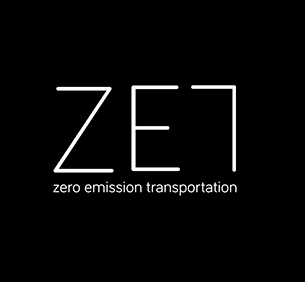How to make electric driving a success

With all the environmental benefits you would think that electric driving is booming right now. But unfortunately it isn’t. The main reason for people not to buy an electric car is the price in comparison with a conventional car.
When you look at the price of a Tesla, it is obvious that not everybody can afford it. And when you look at less expensive electric cars you see that it is going to be at the expense of your driving range, thus how far you can drive with it. Next to price, the ease of use is limited as well. Gas stations can be found everywhere, but you don’t see charging points for electric cars everywhere. Next to that, filling up your car with gas can be done within a minute, charging your car will take much longer than that.
‘Chicken or egg’ situation
The above reasons for not driving an electric car shows a ‘chicken or egg’ situation. Consumers think it is expensive and inconvenient because the infrastructure isn’t widely available. Companies, think of EV manufacturers and those responsible for the charging infrastructure, won’t invest in it because consumers aren’t buying their products. Of course it isn’t such a black and white situation, as there are many other factors involved. But in general it sums up the story why electric driving is not booming yet.
How GreenCharge helps to make electric driving a success
A lot of effort is needed to make electric driving a success. A couple of things that needs to be done are improving the charging infrastructure and lowering the prices of electric cars. This way electrive driving will be more accessible and profitable.
This makes it both a technical and social challenge. It is a technical challenge because the prices will drop when the energy density of batteries will be higher. When car manufacturers are able to develop smaller batteries that can hold more energy, the cars can become cheaper. Ultra-fast charging will also make it more user friendly. The social challenge is how to make electrive driving as attractive as possible. This can be done with private subsidies or tax advantages for example. It will be a combination of factors that will do the trick.
GreenCharge wants to overcome this problem by looking at business model innovation. The role of the business models is to use technological innovations in such a way that they pay off and become beneficial. It is nice to have these technological innovations such as smart charging, vehicle-to-grid, and smart neighbourhoods. But when it is not worthwhile to invest in these technologies they stay shelved. We integrate these technologies in the business models to see how we can create a profitable model from these technologies.
The success of driving electric vehicles (EVs) will increase more when the electricity with which the EVs are charged comes from a sustainable source, e.g. solar or wind power. At the moment this is not the case. There are still benefits when the EVs are charged with fossil fuels, but these benefits will increase with sustainable produced electricity.
Business model pilot cities
At the moment we are testing these models in three pilot cities: Oslo, Bremen and Barcelona. These cities were chosen because they are different in culture and maturity of the electric vehicle market. Within these cities we test different scenarios. In Oslo, a housing corporation wants to offer smart charging options to the residents. In both Bremen and Barcelona we have a pilot for an employer who wants to offer charging to its employees. Next to that the GreenCharge project is working a pilot with shared electric cars in Bremen and shared electric scooters in Barcelona.
Eventually when we have tested and validated the different scenarios we can use this as a showcase for other cities. For example how they can improve the electric mobility in their city. GreenCharge also has 11 uptake cities who are actively involved in this project. And not only cities can learn from this project, but also other organizations and companies. For example car-sharing companies can learn from the pilot in Bremen. This way they do not need to invent the wheel all over again and can make use of these business models.
Developments in electric driving
Batteries and cars are becoming more affordable. They are still expensive, but progress is being made. There are developments in mobility-as-a-service: within such a service you have a subscription on several mobility services. This way you only pay for the usage, but you don’t own a car or scooter yourself.
A good and new development in electric driving is Lightyear. It is a company that was started by people who were part of the Solar Team Eindhoven at the Eindhoven University of Technology. At this company they are building a family car on solar energy. It’s not just a car with solar panels on it, but everything related to the car is optimised to work as efficiently as possible. Their goal is to make an EV that does not need charging infrastructure, because the car generates its own energy.
Do you want to stay up to date?
Then subscribe to our newsletter! Twice a year we will send you an update on everything that GreenCharge is doing. You can also follow us on Twitter and LinkedIn.
This article is based on an interview with Lasse Castenmiller, Master student from the Eindhoven University of Technology. He studies Sustainable Energy Technology. He has worked on Work Package 3 for GreenCharge. Here the focus lies on business model design and prototyping. From August until December 2019 it was his job to develop a method for testing and evaluating the business models for GreenCharge.
Newsletter
Subscribe now to receive the GreenCharge newsletters in your email with latest news about the project and the forthcoming events.





















